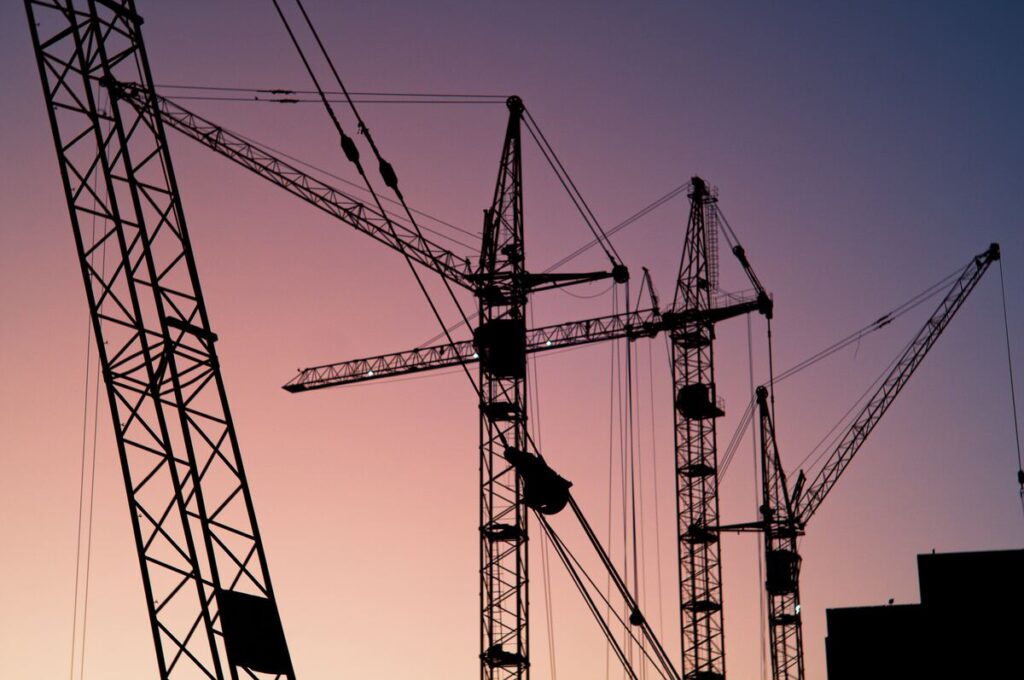Exclusive Neuroject Article: Imagine a world where construction budgets are met with amazing accuracy, buildings reach greater heights, and infrastructure projects become more effective. In this scenario, the building sector is no longer plagued by the constant specter of cost overruns. Modern technologies and data-driven decisions are transforming the art of construction cost estimating in this brave new world.
Construction cost assessment plays the conductor in the vast symphony of construction, coordinating the financial elements of the initiatives that create our reality. It’s a dynamic process that strikes a balance between imagination and realism, ambition and financial limits. It involves more than just accounting for materials, labor, and equipment. On the other hand, inaccurate projections have caused projects to experience delays, disagreements, and financial instability, leaving a wake of lost possibilities and crushed ambitions.
In this article, we will examine the foundations of construction cost estimation, consider the important variables influencing costs, analyze the changing approaches, and look ahead to the future of this vital activity. By the time you’ve finished, you’ll have the knowledge necessary to make wise choices, reduce risks, and make sure that your building goals are successfully realized in the challenging year ahead.
Table of Contents
Introduction
There is a grim truth that keeps both builders and stakeholders up at night in the high-stakes world of construction, where skyscrapers kiss the sky and sophisticated infrastructure crisscrosses cities: construction cost overruns. Cost overruns on construction projects are predicted to cost over $40 billion in the United States alone in 2024. It’s a problem that not only drains resources but also undermines consumer confidence in the sector.
Successful building projects are built on accurate construction cost estimation. Putting a price on bricks and mortar is only one aspect of accurately anticipating the financial needs needed to realize an architectural design. Even a small error in judgment can have disastrous results in the building sector since budgets are as large as the structures themselves. Accurate construction cost estimating facilitates timely project completion, prevents disagreements, and promotes a sense of accountability in the construction ecosystem, in addition to the financial benefits.
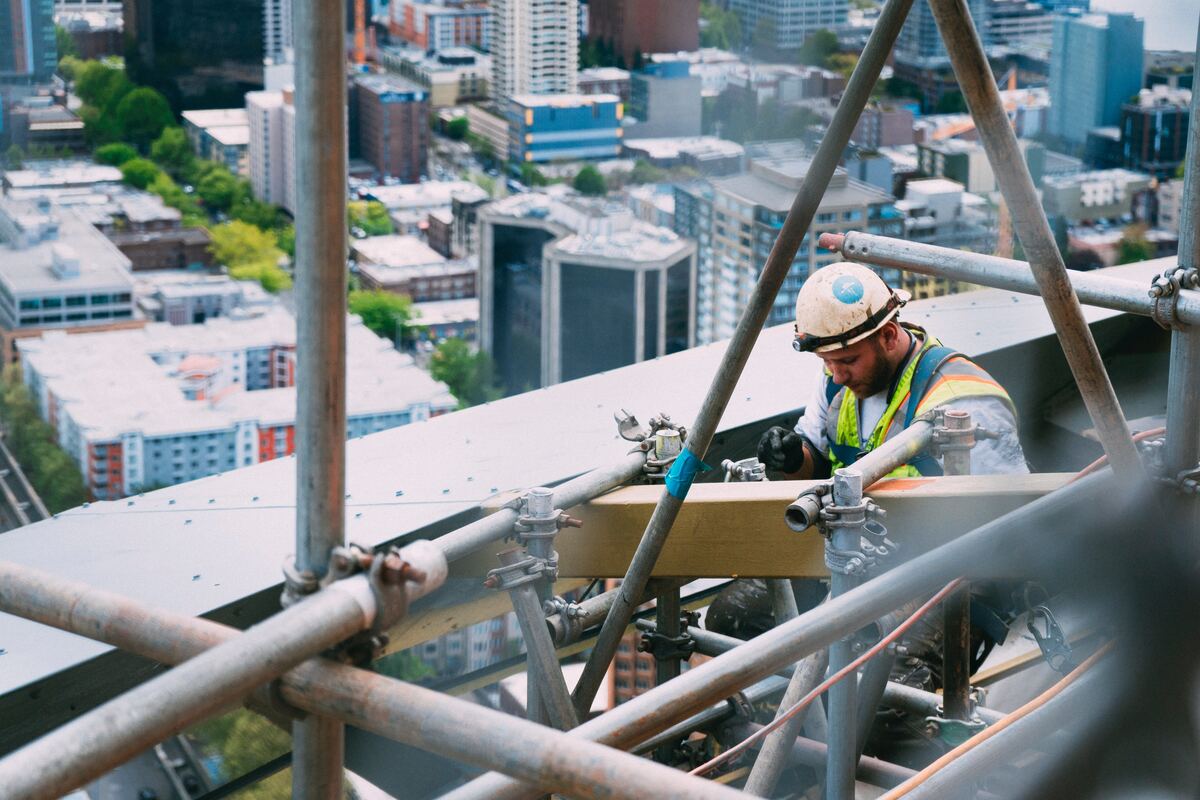
Construction cost estimating is always important, but its techniques, tools, and difficulties change over time. 2024 will bring its own set of challenges in the quickly evolving world of construction, including shifting material costs brought on by supply chain disruptions and the incorporation of cutting-edge tools like artificial intelligence and building information modeling (BIM).
This article acts as a beacon for all stakeholders in the building industry in light of these difficulties and possibilities. This extensive manual’s explicit goal is to arm you with the information, methods, and perceptions required to successfully negotiate the difficult world of construction cost estimates in 2024. It serves as a guide for those working in the building industry, project managers, investors, and anybody else interested in the complex relationship between numbers and structures.
Understanding Construction Cost Estimation
Any construction project’s financial journey is guided by the construction cost estimation. The methodical estimation of the costs necessary to complete a building project is an essential step in the process. For successful project planning, budgeting, obtaining financing, and ultimately project execution, accurate construction cost estimation is essential. The complexities of building cost estimation, its multiple components, and the techniques used to obtain accuracy will all be covered in this part.
Components of Construction Cost Estimation
Quantity Takeoff: Quantity takeoff, which entails a thorough evaluation of all materials, labor, and equipment necessary for the project, is the foundation of cost estimating. Every component of this process, from bricks to steel beams, to worker hours and machinery utilization, must be measured and quantified. Every subsequent cost calculation starts with a quantity takeoff, which is typically done in conjunction with architects, engineers, and other relevant professionals.
Material Costs: The majority of building expenses are made up of material costs. The cost estimate must take into account the going rates for items like concrete, steel, wood, and, if necessary, specialist materials. Since changes in material costs can have a big influence on project budgets, accurate material cost estimation is crucial.
Labor Costs: Another significant construction cost component is labor. The number of people needed, their level of expertise, and the amount of time required to perform tasks are all factors that must be considered by estimators. Geographical location, labor unions, and going wage rates can all affect labor expenses.
Equipment Costs: Heavy machinery and equipment are frequently used in construction, which has its own set of expenses. When evaluating project costs, estimators must take fuel, maintenance, depreciation, and equipment rental fees into consideration.
Overhead and Profit: The total direct costs are often divided by the overhead costs, which include office expenses, insurance, and administrative charges. The contractor’s profit is also covered by a profit margin. The estimator must strike a balance between maintaining appropriate profit for the construction company and offering competitive prices.
Suggested article for reading: Green Building Materials
Methods of Construction Cost Estimation
Unit Price Method: The unit pricing method entails giving each unit of labor or material a fixed cost. The price per square foot of painting, the price per cubic yard of concrete, or the price per linear foot of piping are a few examples. This strategy, which is frequently used in contracts with several similar items, makes construction cost estimation for repetitive jobs simpler.
Parametric Estimating: In order to estimate expenses, parametric estimating uses historical data and statistical relationships. It entails creating cost models based on the specifics of a project and extrapolating those models to calculate costs for future initiatives. Consider basing your estimate of the price of a new office building on the price per square foot of comparable projects that have already been finished.
Analogous Estimating: Analogous estimation, often known as top-down estimating, entails comparing the current project to earlier initiatives with a comparable scale. This method uses analogies to offer a broad cost estimate and relies on the estimator’s experience and discretion.
Cost Estimating Software: Technology is crucial to construction cost estimation in the modern building sector. Estimators benefit from specialized software and tools that are frequently combined with building information modeling (BIM) in order to streamline the process and increase accuracy. These systems can automate quantity takeoff, provide real-time updates on material pricing, and quickly complete intricate computations.
Importance of Accuracy in Construction Cost Estimation
Budget Planning: It provides the framework for developing realistic budgets, which are crucial for obtaining funding and guaranteeing the viability of a project financially.
Risk Management: Identifying potential risks and uncertainties in a project’s cost structure is made easier with accurate estimations. Better risk mitigation techniques and emergency planning are now possible.
Competitive Advantage: Accurate construction cost estimates might mean the difference between winning and losing a contract in situations where bidding is competitive. Underestimating might result in financial losses, while overestimating can result in missed opportunities.
Client Confidence: Clients need to be confident that a project will be finished on time and on budget, whether they are private investors or public agencies. Cost estimates that are accurate increase credibility and trust.
A thorough understanding of project components, materials, labor, and equipment prices is necessary for the complex process of estimating construction costs. Software tools and various estimation techniques are available to help with this process. For construction projects to be planned and carried out successfully and to satisfy the expectations of all parties involved, it is essential to estimate costs accurately.
Suggested article for reading: Construction Risks
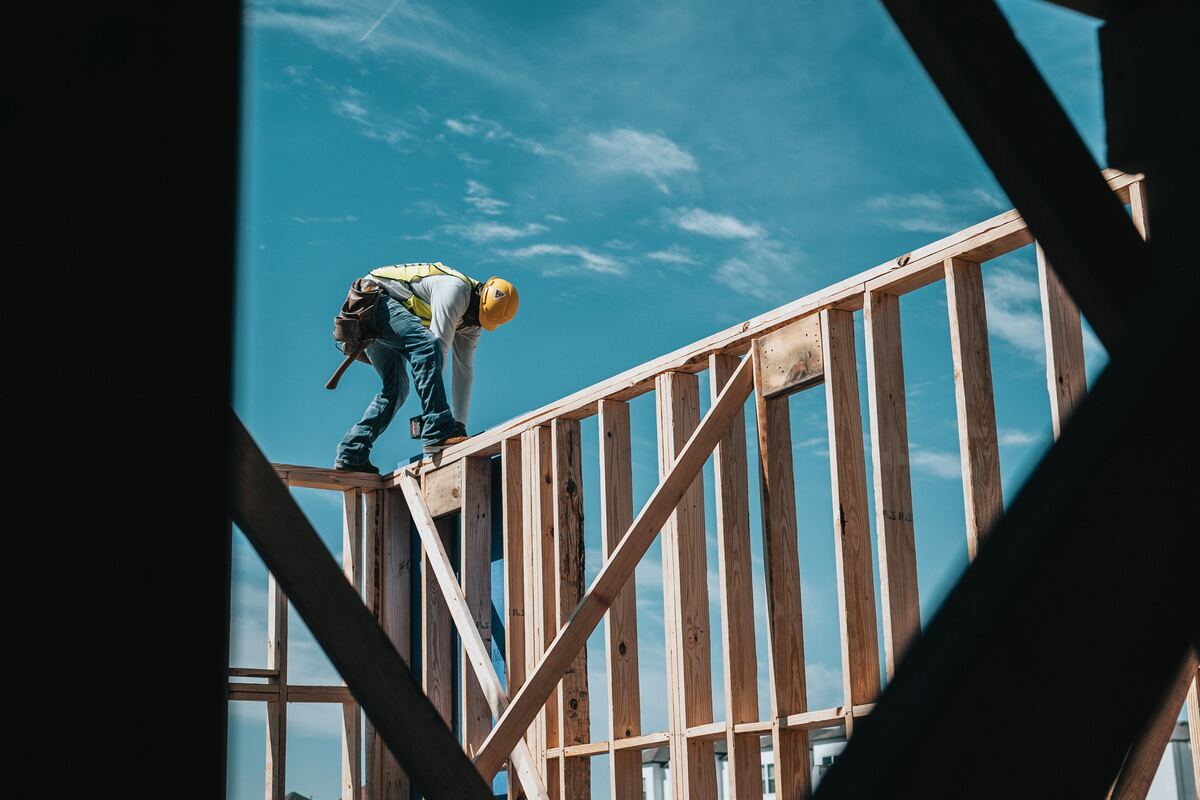
Key Factors Affecting Construction Costs
Accurate construction cost estimation is essential for the effective completion of complex construction projects. Construction industry experts must fully comprehend and successfully manage the many elements that might have a substantial impact on cost. We will examine the most significant and potentially significant elements affecting construction costs in 2024 in this section.
Labor Costs
Budgets for construction often include a sizeable share of labor expenses, which are significantly influenced by labor availability and skill levels. The construction sector has struggled with a lack of competent personnel in recent years. The lack of skilled people may result in greater labor expenses, which would raise project prices overall. Additionally, labor union agreements, overtime pay, and prevailing wage regulations, all of which can differ locally, can all have an impact on labor expenditures.
In order to address labor-related cost concerns in 2024, investments in workforce development and training will also be necessary to close the skills gap. Optimizing work schedules and minimizing rework are two effective project management techniques that can assist in controlling the rise in labor-related costs.
Material Costs
The price of materials is intrinsically unstable and is impacted by supply and demand, general economic conditions, and geopolitical developments. The COVID-19 epidemic has recently caused supply chain disruptions that have affected the building industry. Due to these hiccups, material prices have fluctuated, delivery has been delayed, and transportation costs have gone up.
The rising popularity of sustainable construction methods has an effect on material costs as well. Budgetary considerations for projects may be impacted by the high cost of sustainable materials. Therefore, trade-offs between sustainability objectives and material costs need to be carefully considered by building industry specialists. This aspect can significantly affect the construction cost.
Equipment Costs
Many different pieces of heavy machinery and equipment are needed for construction operations. The price of renting or buying this equipment can have a big impact on project expenditures. Equipment costs are influenced by a number of variables, including equipment availability, fuel prices, maintenance costs, and technological advancements.
By enhancing equipment utilization, implementing predictive maintenance, and increasing fuel efficiency, the use of technology like telematics and IoT (Internet of Things) in construction equipment can open up prospects for construction cost savings in 2024.
Regulatory and Environmental Factors
Regulations and environmental factors may significantly affect the construction cost. Regulation changes, such as revisions to building codes or safety requirements, may call for expensive adjustments to construction plans and materials.
Project costs may also be impacted by environmental laws and sustainability requirements. Waste reduction, energy efficiency, and adherence to green building standards can all increase project costs. It’s crucial to remember that sustainability expenditures can result in long-term cost savings due to increased energy efficiency and diminished environmental impact.
Market Conditions
Costs can be greatly impacted by the condition of the construction market itself. Construction costs typically increase during times of strong demand because there is more competition for resources. However, when suppliers and contractors become more competitive during economic downturns, there can be potential for cost savings.
To successfully manage shifting dynamics in 2024, construction professionals will need to closely monitor market conditions and be flexible in their cost estimation and procurement techniques.
Scope Changes
Cost overruns may be significantly influenced by scope creep, a term used to describe changes in project scope. Unexpected changes to the project’s design or specs may need more spending on labor, supplies, and equipment.
The impact of scope modifications on construction costs must be minimized, which requires strong change management procedures and excellent communication among project stakeholders.
Geographic Location
Costs can be considerably impacted by a building project’s geographic location. Regulations, labor, and material costs, and other factors can differ substantially between regions. For instance, building expenses in metropolitan regions with expensive land may be very different from those in rural places. To account for these regional differences and choose project locations wisely, construction professionals should carry out detailed regional cost evaluations.
Project Complexity
When estimating costs, a construction project’s complexity is crucial. A higher level of knowledge is frequently needed for complex projects with sophisticated designs, unusual engineering challenges, or specialized requirements, which can increase labor and material costs. The economic implications of project complexity must be identified and addressed through careful project planning and risk assessment.
Construction cost estimation is a complex procedure that is affected by many different variables. Construction industry experts will have to negotiate a terrain in 2024 that is influenced by labor shortages, changes in the material supply chain, technological breakthroughs, and changing regulatory and sustainability issues. To ensure the successful completion of construction projects within financial restrictions, it is crucial to take these major aspects into account thoroughly, react to changing situations, and use good project management procedures.
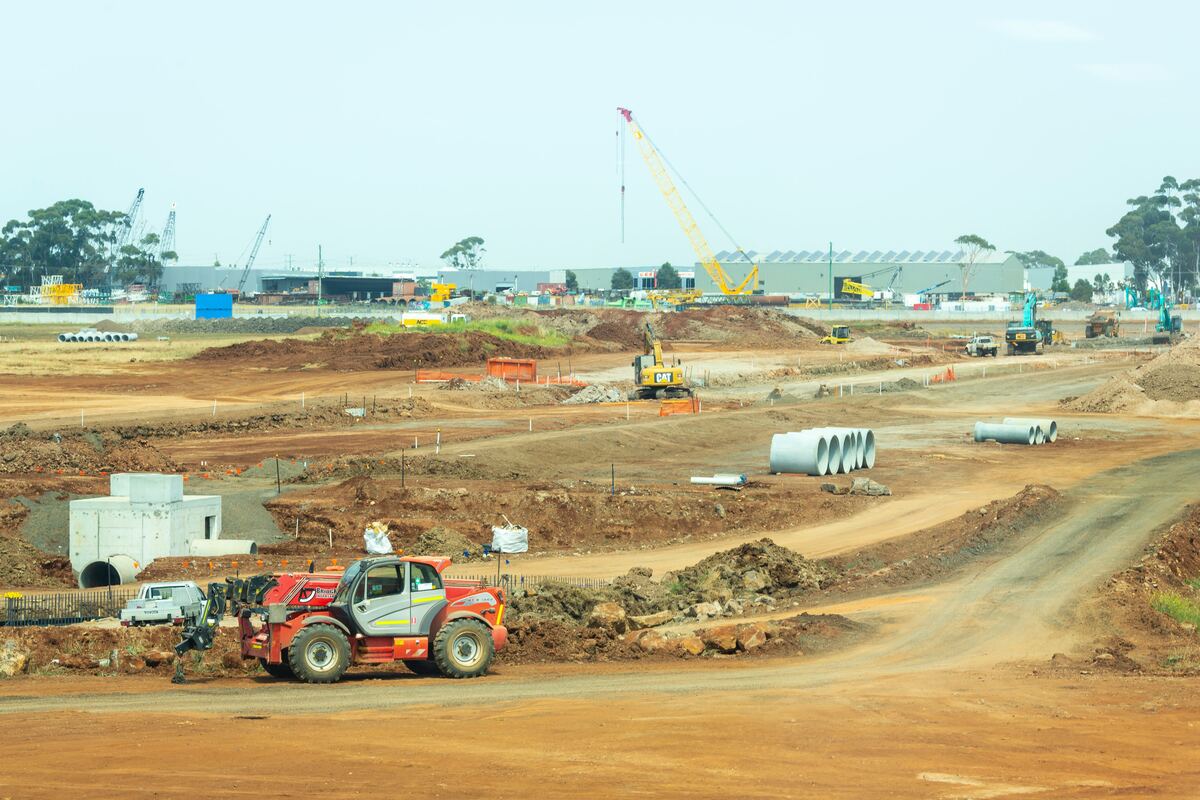
Construction Cost Estimation Methods
Successful building projects are built on accurate cost estimation. It acts as a guide for project planning, purchasing, scheduling, and overall management. The decision on a cost estimation technique can have a big impact on the project’s results, from profitability to financial viability.
1. Quantity Takeoff Method
An essential and popular method for estimating building costs is the quantity takeoff method. It entails an accurate measurement of all the supplies, labor, and tools needed for a job. Although quantity takeoffs can be done manually, modern construction frequently uses digital technologies, such as Building Information Modeling (BIM) and CAD software, to speed up this process. These instruments make it possible to calculate quantities precisely, which lowers human error.
Advantages:
- Accuracy: By quantifying each project component, quantity takeoffs offer a very precise estimation.
- Detailed: It allows for a thorough grasp of the project’s scope because it accounts for all materials and labor.
- Useful to Bidding: Quantity takeoffs are frequently used by contractors in open bidding.
Limitations:
- Time-Consuming: It can take a while to manually take off quantities, especially for complicated and huge projects.
- Dependent on Expertise: The estimator’s level of competence affects accuracy.
- May Not Account for All Costs: It might not include all project-related expenses including overhead and unforeseen fees.
2. Unit Price Method
In the unit price method, various project components, such as cubic meters of concrete, square meters of flooring, or linear meters of piping, are given a unit cost. These unit costs frequently depend on previous data or averages for the industry. The unit cost is multiplied by the needed quantity to determine the overall cost.
Advantages:
- Simplicity: The process is simple and not too difficult to apply.
- Applicability: It works effectively for projects with similar components that are repeated.
- Quick Estimates: It is helpful for initial project evaluations since it enables quick cost estimations.
Limitations:
- Limited Accuracy: The accuracy may differ because unit pricing is frequently averages.
- Inflexibility: It might not take into account project-specific nuances or scope modifications.
- May Require Extensive Historical Data: It is necessary to have access to a sizable historical cost data database in order to develop correct unit prices.
3. Parametric Estimating
Using mathematical models or algorithms, parametric estimation determines costs based on particular project parameters. These parameters might relate to the scope, difficulty, or location of the project, among other things. These values are entered by the estimator into the model, which subsequently calculates a cost estimate.
Advantages:
- Speed: Parametric estimating provides rapid estimates, making it valuable for early project phases.
- Consistency: By using pre-established algorithms, it guarantees consistency in cost estimation.
- Useful for Conceptual Estimates: When there is a lack of precise project data, it is especially helpful for conceptual or preliminary estimations.
Limitations:
- Dependent on Model Accuracy: The accuracy of parametric estimates depends on the accuracy of the underlying model.
- Limited Detail: In other instances, it might not provide the amount of specificity required for accurate budgeting.
- Data Requirements: Accurate parametric models require a large amount of historical data to be developed and maintained.
4. Cost Estimating Software
The cost estimation process has been streamlined by a variety of software solutions thanks to the digital revolution in the building sector. These software programs include advanced tools for estimating, budgeting, and project management and frequently interface with BIM models.
Advantages:
- Efficiency: Software tools speed up estimation and lower the possibility of mistakes.
- Integration: They may be integrated with different project management tools, which improves project coordination.
- Real-Time Updates: Real-time updates are possible with many software solutions, ensuring that estimates are always up to date.
Limitations:
- Cost: Software of a high caliber can be pricey, especially for small businesses.
- Learning Curve: Effective use of these technologies may necessitate training and customization.
- Dependency on Technology: Reliance on software may expose weaknesses if technological problems occur.
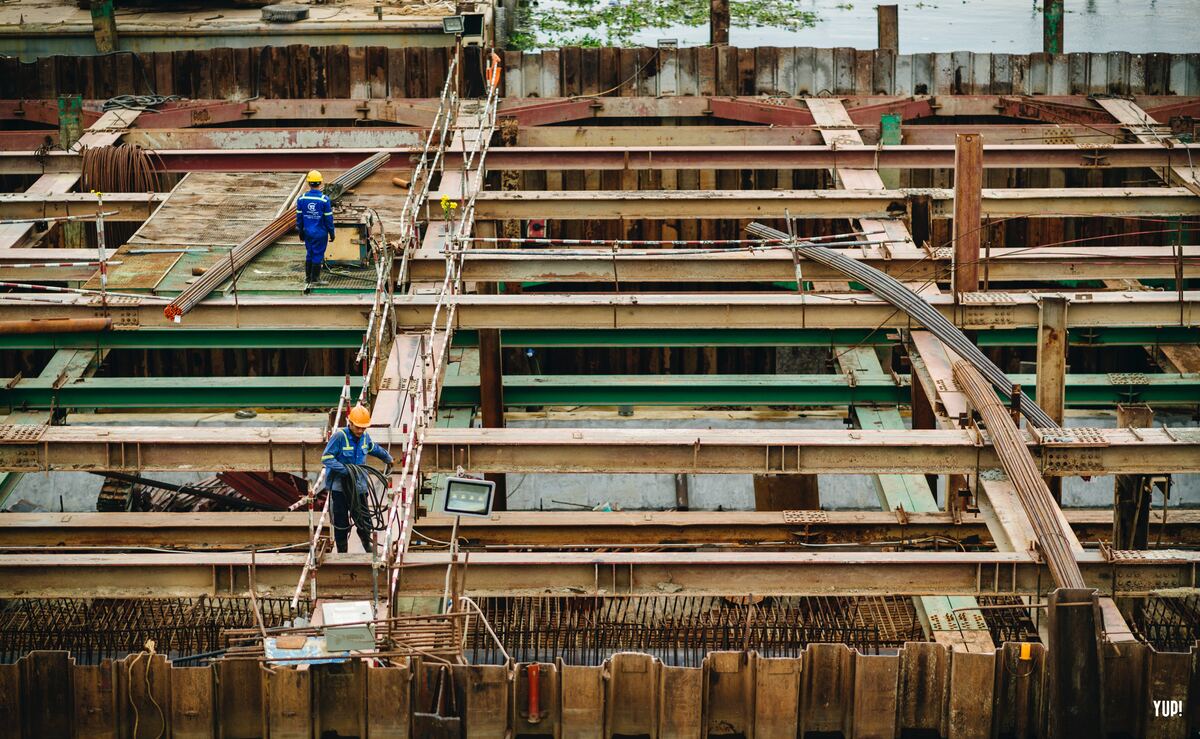
Challenges and Best Practices in Construction Cost Estimation
In the construction sector, cost estimation is a crucial procedure, and a project’s success depends greatly on how accurate it is. This procedure is not without difficulties, though. The main obstacles to construction cost estimation will be discussed in this part, along with the best solutions.
Challenges in Construction Cost Estimation
- Inaccurate Data: The accessibility and veracity of data are one of the main difficulties in cost estimates. Estimators rely on previous data, however, this data might not always accurately reflect the state of the market, resulting in inaccurate estimates.
- Scope Changes: Cost projections may be considerably impacted by changes in the project’s scope. To maintain the accuracy of their estimates when projects change and customer requirements alter, estimators must quickly adapt.
- Economic Uncertainties: Cost projections may become questionable due to economic issues like inflation and currency volatility. The costs of supplies, labor, and equipment can all be affected by these variables, which can fluctuate quickly.
- Labor Costs: Accurate labor cost estimation can be difficult because of things like labor shortages, wage differences, and modifications to labor legislation.
- Material Prices: Changes in material costs, particularly for staples like steel and concrete, can make cost estimation extremely difficult. Disruptions in the world’s supply chains may make these variations worse.
- Environmental Regulations: Cost estimating might become more difficult when environmental standards become more strict since projects may need to take more steps to comply.
Best Practices in Construction Cost Estimation
- Use of Historical Data: Historical data continues to be a significant resource despite its drawbacks. To inform current estimates, estimators should have a thorough database of previous projects and the expenses they included.
- Regular Updates: To take into account changes in market conditions, project scope, and economic factors, cost estimates should be updated often. This guarantees that estimates are accurate for the duration of the project.
- Contingency Planning: A best practice is to include contingency provisions in estimations. Contingency reserves serve as a cushion against unforeseen expenses, protecting the project’s finances.
- Digital Tools and Software: Utilize contemporary technologies to increase accuracy and speed the estimation process, such as Building Information Modeling (BIM) and building cost estimating software.
- Expertise and Training: To keep professional estimators current on the newest market trends and tools, invest in their knowledge, and offer regular training.
- Collaboration: In order to make sure that cost estimates are based on a comprehensive understanding of the project, encourage collaboration amongst various project stakeholders, including architects, engineers, and contractors.
- Risk Assessment: To identify possible cost-influencing causes and devise mitigation methods, conduct extensive risk assessments.
- Benchmarking: To determine whether cost projections are fair, compare them to industry benchmarks. This can assist in locating possible mistakes or omissions.
- Sustainability Considerations: Cost estimates should take sustainability into account. Even though sustainable methods may be more expensive initially, they can result in long-term savings and environmental advantages.
- Document Assumptions: The estimation process’s underlying assumptions should be clearly documented. In the event that changes or updates are required, this transparency may be beneficial.
- Continuous Improvement: Conduct post-project cost evaluations to learn from prior estimates once the project is finished. Determine areas that need improvement, then modify your estimation procedures.
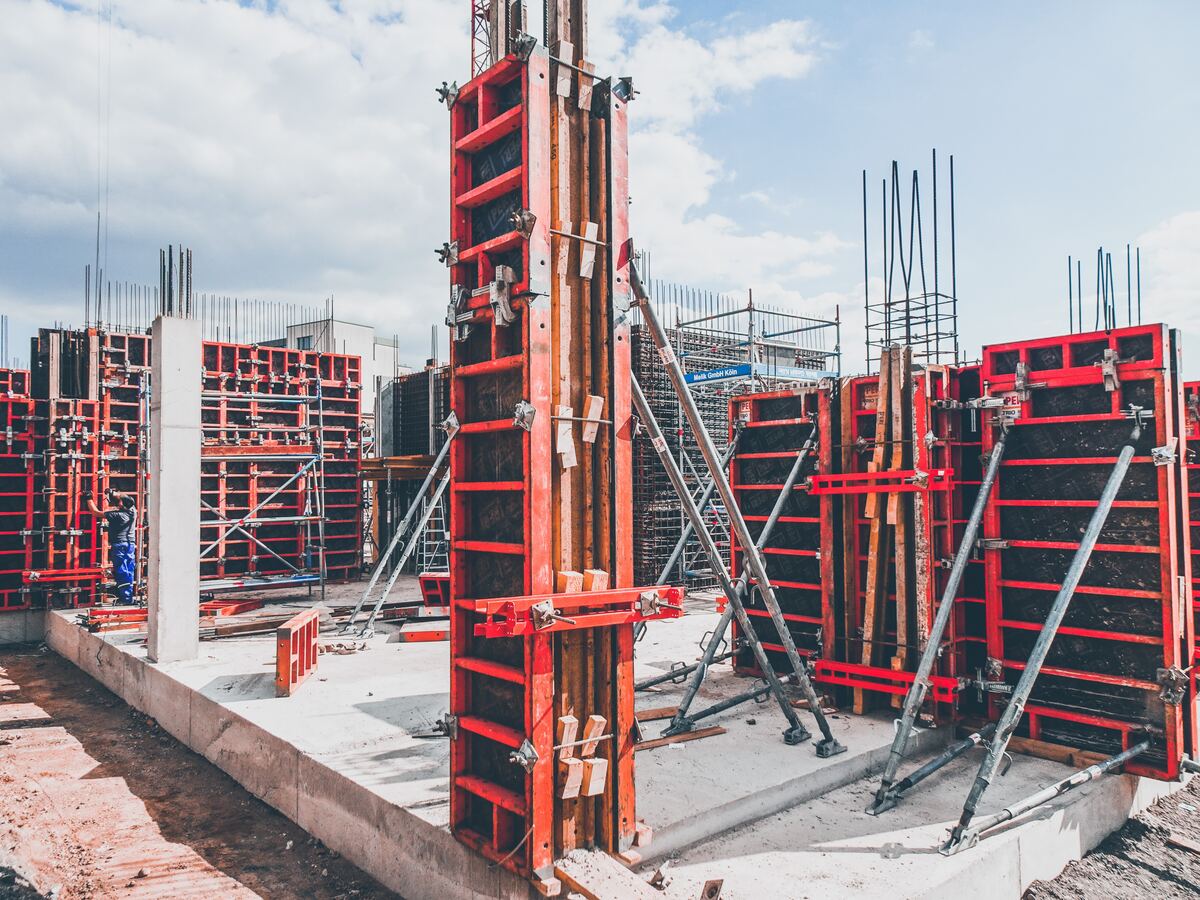
Future Trends in Construction Cost Estimation
Technology advancements, sustainability requirements, and the desire for better accuracy and efficiency are driving a dramatic revolution in the field of construction cost estimation. Here are some major themes that will impact construction cost estimation as we move into the future:
Suggested article for reading: future of construction
1. Artificial Intelligence and Machine Learning
Machine learning (ML) and artificial intelligence (AI) are increasingly important in estimating construction costs. Large datasets, previous project information, and current market data can all be analyzed by AI systems to produce extremely precise cost projections.
This not only expedites the estimation process but also improves accuracy by taking a variety of factors into account. Project managers may more effectively foresee future cost overruns by using AI, which can also spot patterns and trends in previous projects.
Suggested article for reading: AI in Construction
2. Building Information Modeling (BIM)
The way building projects are planned and carried out is being revolutionized by BIM. It enables the development of digital representations of a building’s structural and operational features. BIM offers a comprehensive dataset for cost estimation that may be utilized for precise quantity takeoffs and cost calculations. Through the course of the project lifetime, greater cost control and optimization are made possible thanks to BIM’s capacity to depict the entire project in a digital environment.
Suggested article for reading: BIM in Construction
3. 5D BIM
5D BIM expands on conventional 3D BIM by including cost as a fifth dimension. Real-time cost tracking and forecasting are made possible because of the incorporation of cost data into the BIM model. Project stakeholders can swiftly determine the financial effects of design modifications or delays, resulting in better-informed choices and fewer cost overruns.
4. Sustainable Cost Estimation
Construction projects increasingly take sustainability into account. It might be difficult to calculate the cost of energy-efficient systems, green certifications like LEED, and sustainable building materials. These elements will need to be taken into consideration by future cost estimators, along with any potential long-term cost reductions brought on by sustainable construction methods.
Suggested article for reading: Sustainable Buildings
5. Blockchain Technology
By offering a safe and transparent platform for logging and validating project expenses and transactions, blockchain is advancing the field of construction cost estimating. The risk of disputes and fraud can be decreased by enhancing confidence among project stakeholders and streamlining financial procedures.
Suggested article for reading: Blockchain in Construction
6. Augmented Reality (AR) and Virtual Reality (VR)
Virtual site inspections and simulations are being made possible by AR and VR technologies. With the aid of these technologies, estimators can more clearly see the construction site and identify any potential problems. Additionally, immersive instruction in project management and cost prediction can be provided through VR.
Suggested article’s for reading: Virtual Reality in Construction | Augmented Reality in Construction
7. Cost Estimation Software IntegrationIntegration between different software platforms must be easy as the construction sector embraces more specialized software tools. Future developments include the creation of comprehensive software packages that can manage project management, scheduling, financial analysis, and cost estimation in a single environment.
8. Predictive Analytics
Predictive analytics makes use of historical project data and AI to more precisely anticipate future expenditures. Construction professionals can take proactive action to keep projects on track and below budget by anticipating potential hazards and opportunities early in the project.
Technology improvements and sustainability issues are inextricably linked to the future of construction cost prediction. The construction sector may anticipate more accurate, effective, and sustainable cost estimation procedures by integrating AI, BIM, blockchain, and other cutting-edge technology. To ensure successful and economical project delivery in the upcoming years, experts in the industry must stay up to date on current trends and adapt to the changing environment.
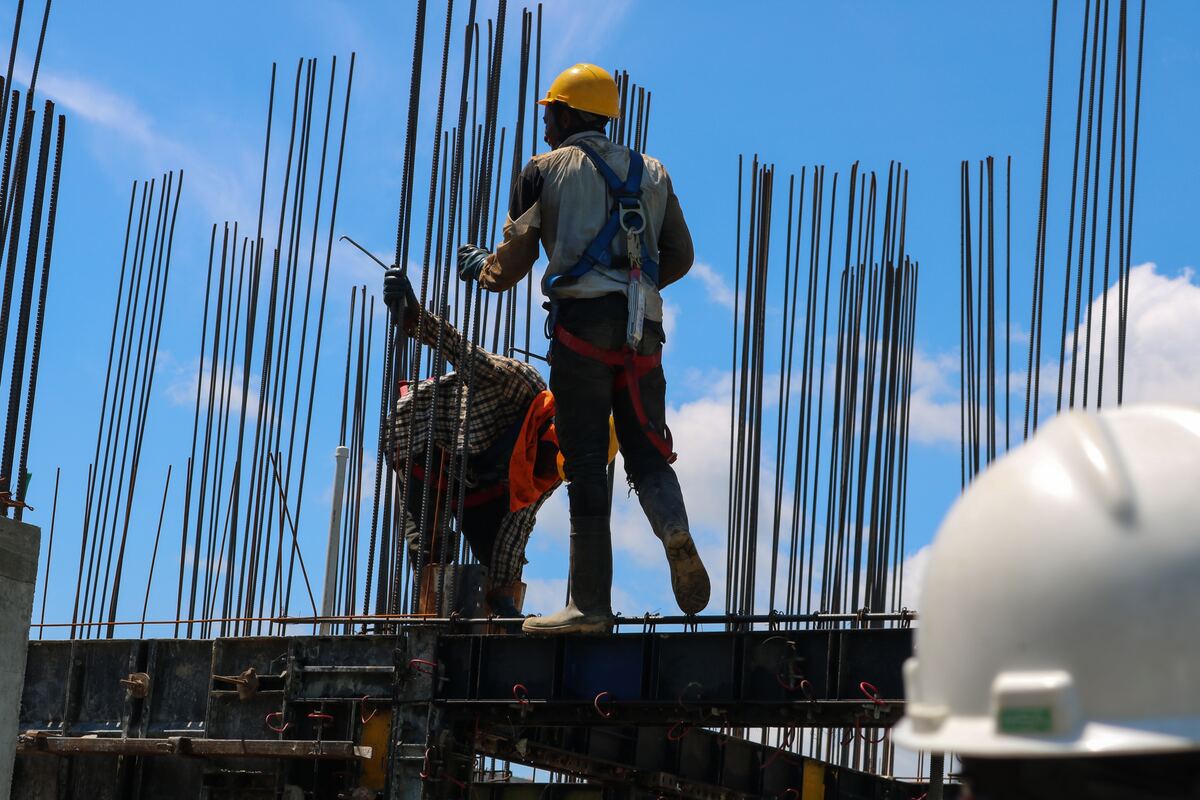
Case Studies and Examples
Theory and concepts are crucial in the field of construction cost estimates, but case studies from real-world situations and real-world applications offer priceless insights and lessons. Let’s investigate how these case studies and examples help clarify the subtleties and complexity of cost estimating in the construction sector.
1. The Sydney Opera House: A Monumental Challenge
One of the most well-known architectural wonders in the world is the magnificent Sydney Opera House. Its construction, which took place between 1959 and 1973, was fraught with difficulties in cost estimation in addition to architectural and engineering difficulties. The $7 million initial cost estimate increased to almost $100 million. This case study serves as an example of how unanticipated difficulties, design modifications, and unforeseen events can significantly affect project costs.
2. The Big Dig: A Lesson in Construction Cost Overruns
The Central Artery/Tunnel Project in Boston, popularly known as “The Big Dig,” serves as a striking illustration of cost overruns in the United States. The cost was ultimately above the initial estimate of $2.6 billion, which was $2.6 billion. The history of the project serves as a reminder of the value of reasonable beginning estimations and the necessity of thorough risk analysis.
3. BIM in Action: The Shard, London
On a more upbeat note, the building of The Shard in London served as an example of how Building Information Modeling (BIM) may significantly improve cost estimation. BIM enabled accurate 3D modeling and data integration, which led to precise cost estimates and effective construction. This illustration demonstrates how technology can improve cost estimation precision in contemporary construction projects.
4. Modular Construction: Marriott’s AC Hotel, New York
The AC Hotel in New York is an innovative example of modular construction. The project used off-site modular components, which drastically cut down on construction time and expenses. This example shows how creative construction techniques have the ability to reduce costs.
5. The Burj Khalifa: Scaling New Heights
The Burj Khalifa, the tallest building in the world, offers a distinctive scenario for cost assessment. Its enormous height and intricate architectural design make precise assessment difficult. Although the $4.1 billion initial estimate was exceeded, the project demonstrated the value of customizing cost estimation approaches to the size and complexity of a project.
Together, these case studies and examples highlight the complexity of construction cost estimating. They stress the importance of:
- Comprehensive Risk Assessment: Identifying and reducing risks that could result in cost overruns.
- Adaptive Estimation: Adapting estimate techniques to the characteristics of a project.
- Technology Integration: Enhancing precision by utilizing tools like BIM and modular construction.
- Continuous Monitoring: Monitoring expenditures carefully throughout the course of the project.
Conclusion
The skill of cost assessment emerges as a keystone that can make or break a project in the delicate fabric of a building, where vision and reality collide and innovation and tradition mingle. The importance of this technique is more apparent than ever as we come to the end of this thorough guide on construction cost estimating for 2024.
We have successfully negotiated the complexities of precise cost estimation throughout this journey, realizing that it is not just about numbers but also about foreseeing obstacles, allocating resources, and eventually fulfilling commitments. In a situation where every dollar counts, the repercussions of erroneous projections are glaringly obvious in enormous cost overruns.
We accept that construction cost estimation has advanced well beyond back-of-the-envelope estimations as we look back at the foundation built by our forebears. It has been strengthened by modern technologies and improved by historical learning. Our investigation of quantity takeoffs, unit price methods, parametric estimation, and software tools highlights the diversity of strategies available, each of which offers a unique lens through which to assess the financial scope of a project.
Suggested article for reading:
important construction technology in 2024
7 Important Building Technology Ideas for 2024
Resources:
Dodge Data & Analytics | Associated General Contractors of America | Deloitte | Construction Executive | Autodesk | U.S. Green Building Council | Trimble | Procore Technologies | Construction Dive | Modular Building Institute | Construction Week Online | Dodge Data & Analytics
Journal Articles:
- Blank, L. T., & Tarquin, A. J. (2017). Engineering Economy. McGraw-Hill Education.
- Klastorin, T. D. (2008). Project Management: Tools and Trade-offs. John Wiley & Sons.
- Peterson, D. L., & Eschenbach, T. G. (2019). Construction Estimating Using Excel. Pearson.
For all the pictures: Unsplash

